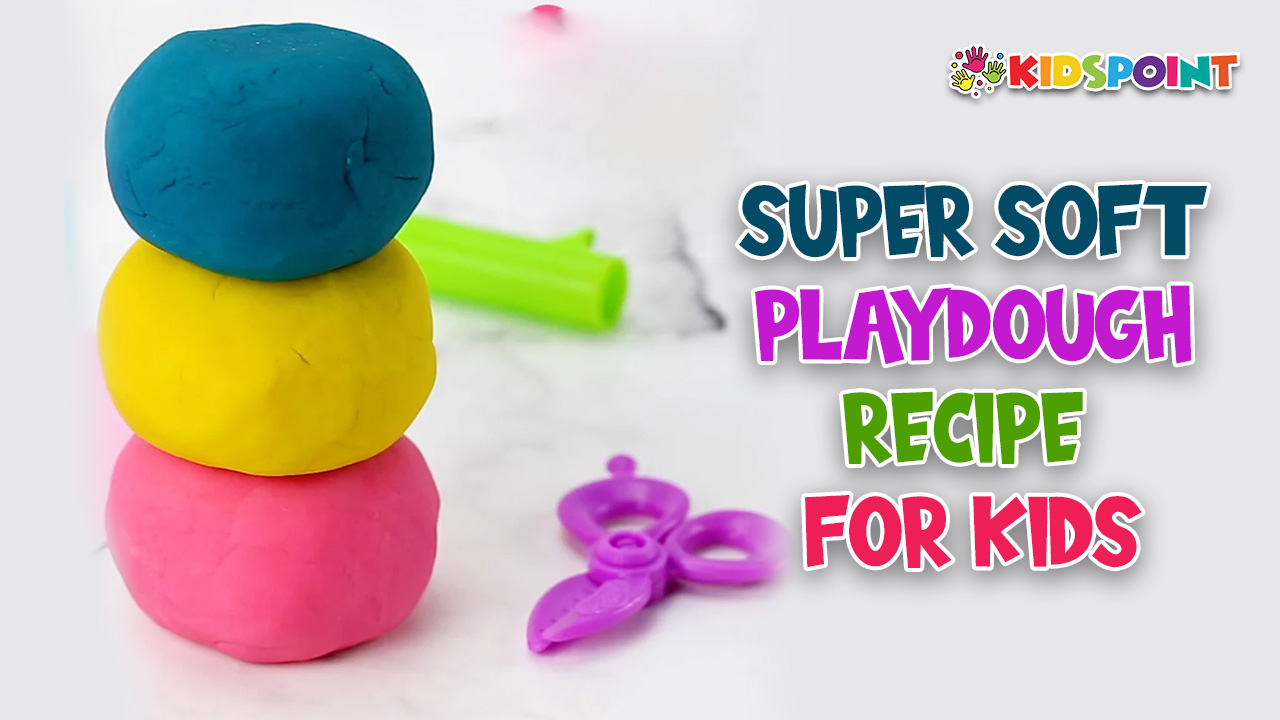Playdough is a timeless childhood favorite, cherished for its ability to spark creativity and imagination in children of all ages. From sculpting miniature worlds to practicing fine motor skills, playdough offers endless possibilities for entertainment and learning. While store-bought playdough is convenient, nothing beats the satisfaction of making your own batch from scratch. In this guide, brought to you by The Kids Point, we’ll delve into the world of DIY playdough and explore a super soft recipe that will delight kids and adults alike.
The Benefits of Playdough Play
Before diving into the recipe, let’s take a moment to appreciate the many benefits of playdough play. Not only does it encourage creativity and imagination, but it also helps develop fine motor skills, hand-eye coordination, and sensory awareness. Through squishing, rolling, and shaping playdough, children engage their senses and explore different textures, colors, and shapes. Additionally, playdough play promotes social interaction and language development as children collaborate, share, and communicate while playing together.
Ingredients and Equipment
To create super soft playdough at home, you’ll need a few simple ingredients and basic kitchen equipment. Here’s what you’ll need:
Ingredients
- 2 cups all-purpose flour
- 3/4 cup salt
- 4 teaspoons cream of tartar
- 2 tablespoons vegetable oil
- 2 cups water
- Food coloring (optional)
- Essential oils (optional) for scent
Equipment
- Mixing bowl
- Saucepan
- Wooden spoon or spatula
- Measuring cups and spoons
- Airtight containers for storage
Step-by-Step Recipe
Now that you have your ingredients and equipment ready, let’s dive into the step-by-step process of making super soft playdough:
- Step 1: In a mixing bowl, combine the flour, salt, and cream of tartar. Stir until well mixed.
- Step 2: In a saucepan, mix together the water and vegetable oil. If you’re adding food coloring or essential oils for scent, this is the time to do so. Adjust the amount of food coloring based on your desired color intensity.
- Step 3: Heat the water mixture over medium heat until it is warm but not boiling.
- Step 4: Gradually add the dry ingredients to the warm water mixture, stirring continuously with a wooden spoon or spatula.
- Step 5: Continue stirring the mixture over medium heat until it thickens and pulls away from the sides of the saucepan, forming a dough-like consistency. This usually takes about 3-5 minutes.
- Step 6: Once the playdough has reached the desired consistency, remove it from the heat and allow it to cool slightly.
- Step 7: Transfer the playdough to a clean surface and knead it gently until smooth and soft. If the playdough is too sticky, add a little more flour; if it’s too dry, add a few drops of water.
- Step 8: Once the playdough is smooth and soft, it’s ready to be enjoyed! Store any leftover playdough in airtight containers to keep it fresh for future use.
Tips for Customizing Your Playdough
One of the best things about making your own playdough is the ability to customize it to suit your preferences. Here are some tips for adding extra flair to your homemade playdough:
- Experiment with different colors by adding food coloring to the dough. Mix primary colors to create new shades or add glitter for a touch of sparkle.
- Enhance the sensory experience by incorporating essential oils for scent. Lavender, peppermint, and citrus are popular choices that can add a pleasant aroma to your playdough.
- Add texture and visual interest by mixing in small beads, sequins, or confetti. These additions can make the playdough more engaging and stimulate tactile exploration.
- Encourage creativity by providing various tools and accessories for shaping and molding the playdough. Cookie cutters, rolling pins, and plastic utensils can all be used to create unique designs and sculptures.
Safety Precautions and Storage Tips
While playdough is generally safe for children to play with, it’s essential to take some precautions to ensure a safe and enjoyable experience:
- Supervise young children while they play with playdough, especially if they’re prone to putting objects in their mouths.
- Avoid using playdough with children who have known allergies to any of the ingredients, such as wheat or gluten.
- Store playdough in airtight containers when not in use to prevent it from drying out. Properly stored playdough can last for several weeks or even months.
- Discard any playdough that shows signs of mold or mildew growth, as it can pose a health risk.
Homemade playdough is a fantastic way to provide children with hours of entertainment while also promoting their development and creativity. By following this super soft playdough recipe from The Kids Point and incorporating your own customizations, you can create a sensory-rich play experience that will delight kids of all ages. So roll up your sleeves, gather your ingredients, and let the fun begin!


